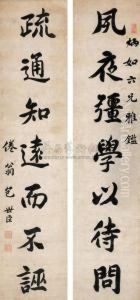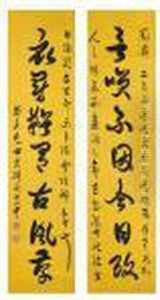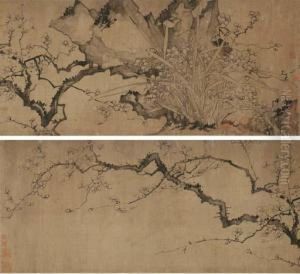Bao Shichen Paintings
Bao Shichen was a Chinese scholar, calligrapher, and painter during the Qing Dynasty. Born in the year 1775 in Taicang, Jiangsu province, he lived through a period of significant change and turmoil in China, as the Qing Dynasty faced both internal unrest and external pressures.
Bao Shichen received a traditional Confucian education and excelled in the arts and literature from a young age. He passed the imperial examinations and became a government official, but he is better known for his contributions to the fields of calligraphy and painting. Bao was deeply influenced by the traditions of the Ming and early Qing literati, a class of scholarly officials and intellectuals who engaged in the arts as a means of personal expression and moral cultivation.
His calligraphy is celebrated for its fluidity and elegance, reflecting the influence of earlier masters such as Dong Qichang. In painting, Bao Shichen specialized in landscapes, which he rendered with a refined touch and attention to detail. He was also skilled in the 'bird and flower' genre. Bao’s works often conveyed his contemplative nature and his philosophical perspectives, infused with a sense of personal emotion and introspection. He is also known for his critical studies of earlier painters, contributing to the historiography and criticism of Chinese art.
Throughout his life, Bao engaged in scholarly pursuits. He wrote on a variety of topics, including history, agriculture, and geography. His intellectual interests were broad, and he was known for his efforts to apply Confucian principles to practical governance and social issues. However, his career as an official was not without challenges, and he experienced periods of disfavor and dismissal.
Bao Shichen's life spanned the final years of the Qianlong Emperor's reign into the troubled times of the Jiaqing and Daoguang emperors, which saw increasing social strife and the beginning of the Opium Wars. He died in 1855, leaving behind a legacy as a model literati who combined artistic excellence with public service and intellectual inquiry. Today, his works are appreciated for their contribution to the development of Chinese calligraphy and painting, and they provide insight into the cultural and intellectual milieu of Qing Dynasty China.




